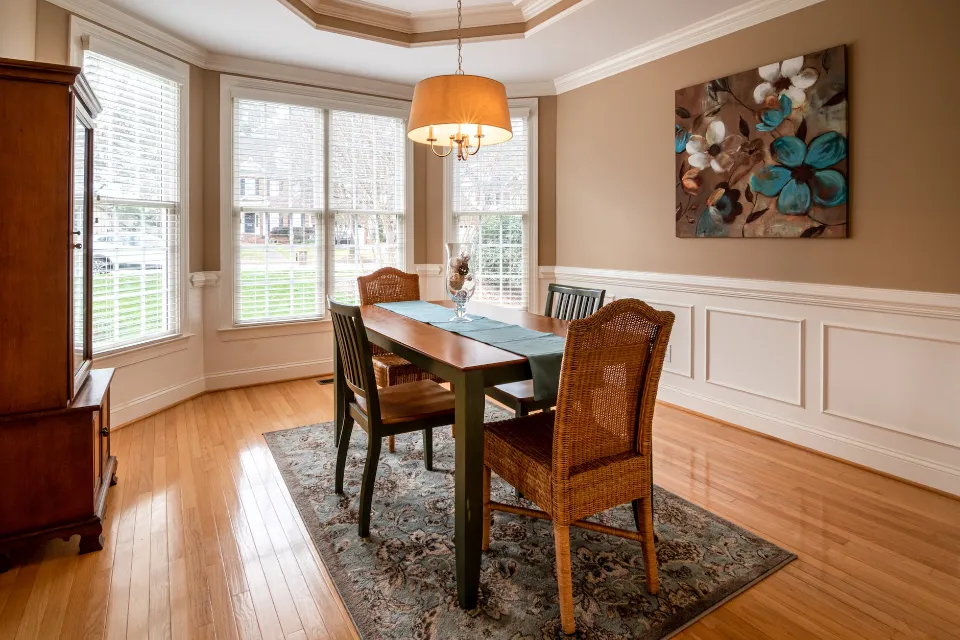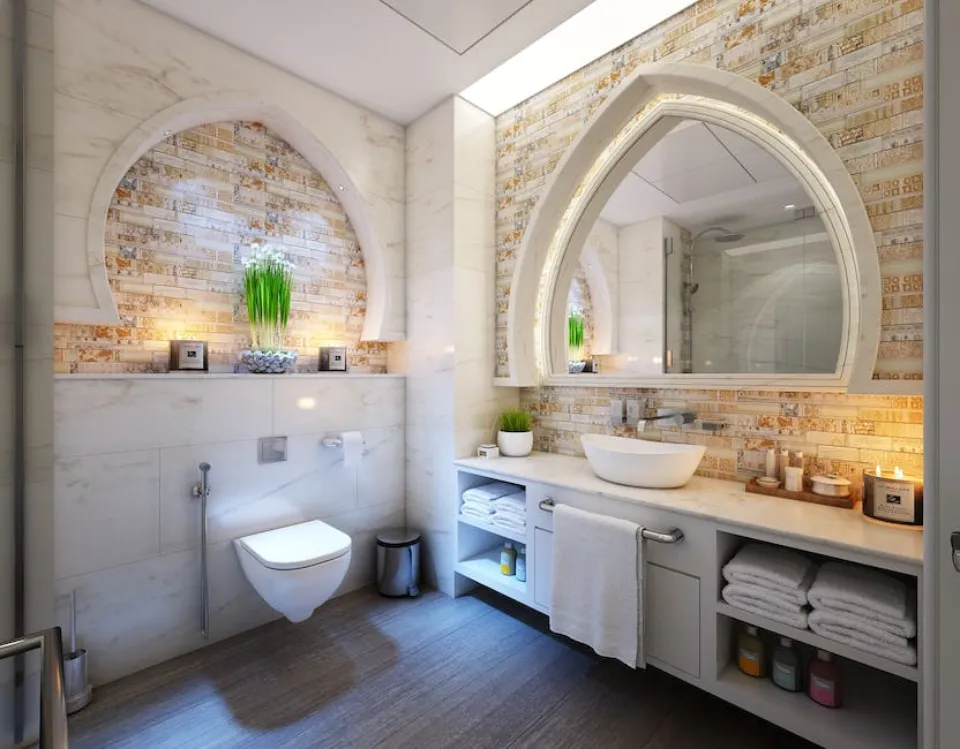Care and skill are necessary to frame a window properly. Even if you can learn how to frame a window from a YouTube video, this article will serve as a guide to completing this project correctly and easily.
So, how to frame a window?
- Setup the workspace and inspect the stud
- Install the stud and create some marks
- Make and install the header
- Fix the header and the sill into the opening
- Screw-in all pieces with a drill
Continue reading for more details.
What You Need to Know About Window Frame
A window frame consists of the jambs, head, and sill that create a perfect space for the window sash. You can also describe it as the outer perimeter of the window. Since automobiles are not the subject of this article, window regulators are not a part of this setup.
A window frame can be made from a few different materials combined or from just one. However, the most common ones include wood, fiberglass, aluminum, and vinyl.
If you want to insulate your home, you may want to think about improving the glass’s quality. The frame can also benefit from the same hack. By doing so, you lower your utility costs and significantly improve your home’s comfort.

How to Frame a Window?
Here is an easy step-by-step guide on how to frame a window:
Tools and Materials List
- Measuring tape
- Marker
- Circular saw
- Pry bar (may be necessary to remove siding or drywall)
- 2×6 lumber for window framing, to measurements
- Fasteners for framing and window install
- Hammer/drill
- Window
- Window Caulking
- Flashing
- Weather-resistant barrier
- Insulation and maybe expanding foam
- Drywall and supplies for repair work, to measurements
- Exterior window trim, to measurements
- Interior window trim, to measurements
- Paint

Let’s Go through the Process
Plan the Location
Plans for interior decorating, existing windows to align with, or working around plumbing and electrical lines—you might need to move them—are a few things to take into account.
Determine If the Exterior Wall is Load-bearing Or Not
The floor joists and roof rafters are parallel to load-bearing walls. They require more extensive headers and possibly extra support to safely make a new opening. If a new window opening needs to be made in a wall that supports weight, it is best to seek professional advice.
However, non-load-bearing walls can typically have openings of any size without endangering the structural integrity of the building. Headers are typically 2×6 for openings up to 4 feet, but check your local building codes for specific recommendations.
Align the interior and exterior locations: Using an existing window or door as a reference point, measure an equal distance both inside and outside.
Prepare the interior: From the working area, remove the trim and moldings. Area flooring and furniture should be covered.
Locate the studs: Find the closest studs inside and around the desired opening using a stud finder or other manual method.
Cutaway the drywall: Cut the drywall floor to ceiling inside the studs with a circular saw, then gently pry it off the wall.
Remove the insulation from the cavity.
Outside, measure the height and width of the desired cavity for the window, allowing for 1/4 inch extra space. Mark it on the wall.
Cut the exterior siding: Cut the exterior siding with a circular saw inside the delineated boundaries.
Cut the sheathing: By subtracting that amount from the exterior hole, cut a hole through the sheathing that is the same size as the window inset. This will leave an opening just big enough for the window.
Back inside, saw through any studs that cross the window opening and remove. Watch out for electrical wiring if you have in-wall plumbing.
Using advanced framing techniques, install the window framing.
- Install vertical or king studs that run from the bottom plate to the ceiling directly next to the window opening.
- In order to provide the necessary structural support, insert jack studs inside the king studs or studs that extend from the floor to the top of the sheathing opening.
- Install the header, which is connected to the king studs on either end and sits on top of the jack studs. The size of the window opening determines the width of the header. Consult the local building codes.
- Along the bottom edge of the window opening, install the sill or horizontal piece that attaches to the jack stud.
- As necessary to maintain on-center spacing for wall studs, install cripple studs or studs that extend from the bottom plate to beneath the window sill.
Install flashing and weather-resistant barriers as per manufacturer’s instructions. These will safeguard building materials from exterior water intrusion, lowering the possibility of rot, mold, mildew, and insect damage. Additionally, they can lessen air leakage (source).
Install the window from the exterior. To complete this step safely, several people are required. For the time being, affix the flange to the frame using only the corners (source).
Assess the window’s level, squareness, and plumbness. Shim as necessary to adjust for any measurements that are off by more than 1/8 inch.
Nail flange securely around the frame.
Seal with caulking, both interior and exterior gaps.
Cut and attach exterior trim. Any gaps must be entirely filled in with trim.
Inside, reinsulate the cavities exposed around the window. Use expanding foam or caulk to seal off any potential air leaks.
Cut and install new drywall around the window opening, completing the proper steps for taping, mudding, and finishing.
Install interior window trim, and reinstall the floor trim and any other molding that was removed for the install.
Paint trim and walls.
Not every room needs to be completely repainted when the wall paint is fading. Other times, painting the window trim with new paint is a great way to brighten the room. If yours is unpainted, painting some on the window trim will enhance the beauty of your house.

Elements of a Window Frame
Build the window frame within the wall assembly flat on the ground, if possible. The wall assembly can be raised into position after being constructed.
- Top and Bottom (Sole) Plates: A top plate is the very top, long horizontal two-by-four that spans the entire length of the house. Similar to this, the flooring of the house has a bottom plate that runs its entire length.
- Window Header: The window headeris a pair of horizontal two-by-fours (or wider boards for larger windows) that run the width of the window frame. A third two-by-four is attached to form the inside of the window frame, and they are set on edge.
- Short Support Studs (Top): Between the top plate and the window header, there are a few short vertical studs.
- King (or Regular) Stud: The king stud, a structural component, runs between the top plate and the bottom/sole plate and forms the window’s outermost sides. Two king studs are present, one on each side.
- Jack (or Trimmer) Stud: Starting at the bottom/sole plate and moving vertically upward until it reaches the bottom of the window header is the jack or trimmer stud. The interior of it rests against the king stud. One on each side, there are two jack studs.
- Sill Plate: The sill plate is a horizontal stud that runs between the two jack studs. The short bottom support studs support it.
- Short Support Studs (Bottom): Short vertical studs run between the sill plate and the bottom (sole) plate.
Even though it would be nice to have windows in every room of the house, it is occasionally not possible. So, you might be wondering does a bedroom have to have a window and how important it is to have one there.

FAQs
Does a Window Need a Frame?
Your home’s windows are crucial parts. The window system as a whole is supported by the window frame. Without window frames, there would be nothing to hold the glass panes in place.
What Goes Between Window and Frame?
Weatherstripping is a strip of resilient material used for covering the joint between the window sash and frame in order to reduce air leaks and prevent water from entering the structure.
What Can I Use for a Window Frame?
Fiberglass or Composite Windows:
Fiberglass frames are strong, lightweight, and resilient. They offer one of the higher insulation values, and they have the best resistance to expansion and contraction due to temperature changes.
Summary: How to Frame a Window?
You can save money by learning how to frame windows because you won’t need to hire a pro to install them. Your house will feel more cozy and the rain won’t get inside if you frame the window.
With the guide above, you can carry out the DIY process on how to frame an existing window or a new one. This article offers the following guidance in addition to instructing you on how to frame a window frame and sill.
- Setup the workspace and inspect the stud
- Install the stud and create some marks
- Make and install the header
- Fix the header and the sill into the opening
- Screw-in all pieces with a drill
If you have any questions, please leave a comment. My Prime Home tries to give you the best furniture information. Thank you for reading.



